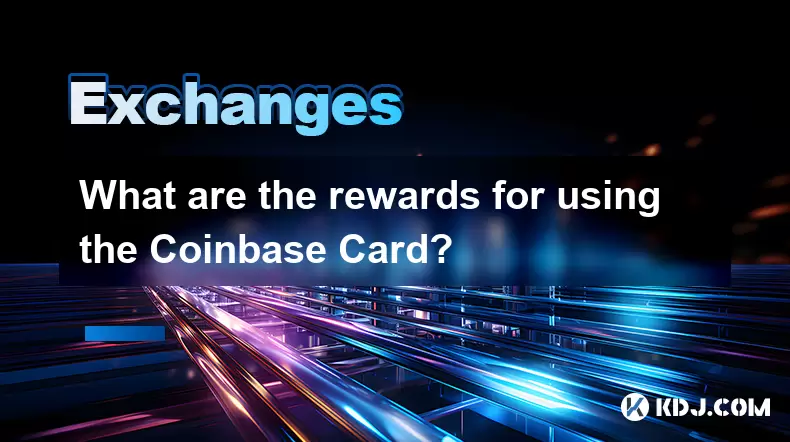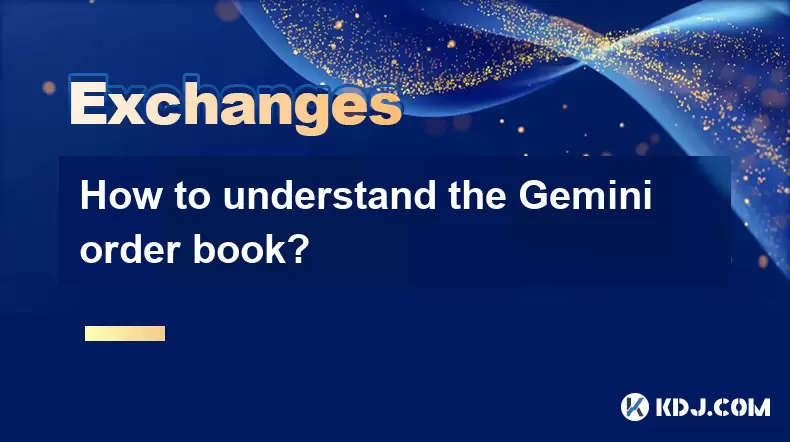-
 Bitcoin
Bitcoin $114400
1.32% -
 Ethereum
Ethereum $3499
2.20% -
 XRP
XRP $2.922
4.26% -
 Tether USDt
Tether USDt $0.0000
0.03% -
 BNB
BNB $752.6
1.53% -
 Solana
Solana $161.8
1.64% -
 USDC
USDC $0.9999
0.01% -
 TRON
TRON $0.3267
1.32% -
 Dogecoin
Dogecoin $0.1991
3.02% -
 Cardano
Cardano $0.7251
3.29% -
 Hyperliquid
Hyperliquid $38.32
3.36% -
 Stellar
Stellar $0.3972
7.58% -
 Sui
Sui $3.437
2.74% -
 Chainlink
Chainlink $16.29
3.65% -
 Bitcoin Cash
Bitcoin Cash $545.3
3.70% -
 Hedera
Hedera $0.2482
7.49% -
 Ethena USDe
Ethena USDe $1.001
0.03% -
 Avalanche
Avalanche $21.40
2.02% -
 Toncoin
Toncoin $3.579
1.56% -
 Litecoin
Litecoin $109.3
2.20% -
 UNUS SED LEO
UNUS SED LEO $8.951
-0.18% -
 Shiba Inu
Shiba Inu $0.00001220
2.75% -
 Polkadot
Polkadot $3.613
2.99% -
 Uniswap
Uniswap $9.173
3.78% -
 Monero
Monero $302.6
2.62% -
 Dai
Dai $0.0000
0.00% -
 Bitget Token
Bitget Token $4.320
1.52% -
 Pepe
Pepe $0.00001048
3.40% -
 Cronos
Cronos $0.1314
4.33% -
 Aave
Aave $259.4
3.54%
What are the rewards for using the Coinbase Card?
The Coinbase Card lets users spend crypto anywhere, earning up to 4% cashback in their chosen cryptocurrency, with rewards automatically credited after each eligible purchase.
Aug 04, 2025 at 02:29 am

Understanding the Coinbase Card and Its Core Functionality
The Coinbase Card is a debit card that allows users to spend their cryptocurrency holdings directly at merchants worldwide. It is linked to a user’s Coinbase account, enabling seamless conversion of digital assets into fiat currency at the point of sale. Unlike traditional credit cards, this card does not involve borrowing money. Instead, it draws funds from the user’s available crypto balance. The card supports a wide range of cryptocurrencies, including Bitcoin (BTC), Ethereum (ETH), Litecoin (LTC), and USD Coin (USDC), among others supported by Coinbase. Each transaction triggers an automatic conversion from the selected crypto to the local currency required by the merchant.
Cashback Rewards in Cryptocurrency
One of the most significant benefits of the Coinbase Card is its cashback rewards program. Users earn up to 4% cashback on every purchase, paid directly in the cryptocurrency of their choice. This feature distinguishes the card from many traditional financial products, where rewards are typically issued in points or limited to specific categories. The cashback percentage varies based on the spending category:
- 4% cashback when using Staked ETH as the funding source
- 2% cashback when using USDC or other stablecoins
- 1% cashback for purchases made with BTC, LTC, or other supported cryptocurrencies
The cashback is credited to the user’s Coinbase account within a few days of the transaction and can be tracked through the Coinbase mobile app. Users have full control over which cryptocurrency they receive their rewards in, allowing them to align their rewards strategy with their investment goals.
How to Activate and Use the Coinbase Card
Activating the Coinbase Card involves a few essential steps, all accessible through the Coinbase app or website. Before using the card, users must complete identity verification and ensure their account is in good standing. The activation process includes:
- Log in to your Coinbase account via the mobile app
- Navigate to the Card section under the “Accounts” or “Rewards” tab
- Select “Get the Card” and follow the prompts to confirm your mailing address
- Wait for the physical card to arrive (typically within 7–10 business days)
- Once received, open the app, go to the Card section, and select “Activate Card”
- Enter the last four digits of the card and follow the on-screen instructions
After activation, the card can be added to digital wallets like Apple Pay or Google Pay for contactless transactions. Users can also set a default funding source for automatic purchases or manually select which cryptocurrency to spend during checkout.
Earning Rewards: Real-World Examples and Mechanics
To illustrate how rewards accumulate, consider a user who spends $200 at a grocery store using Staked ETH as the funding source. With the 4% cashback rate, they would earn $8 worth of ETH credited directly to their Coinbase account. Another example: a $500 online purchase using USDC yields $10 in USDC as cashback. These rewards are calculated based on the real-time exchange rate at the time of transaction settlement.
The cashback is applied automatically—no redemption or claim process is required. Users can view their reward history in the Rewards Dashboard inside the Coinbase app. This dashboard breaks down earnings by date, merchant, amount, and cryptocurrency received. It also shows pending versus posted rewards, helping users track when funds will be available.
It is important to note that rewards are only issued for completed transactions. If a merchant issues a refund, the cashback associated with that transaction will be reversed. Additionally, certain transactions—such as cash advances, balance transfers, or fees—are not eligible for rewards.
Fees and Limitations Affecting Reward Earnings
While the Coinbase Card offers attractive rewards, users should be aware of associated fees and spending limits that may impact net benefits. There are no monthly maintenance fees or annual fees for the card. However, the following fees apply:
- ATM withdrawals: $2.49 per withdrawal, plus any additional fees charged by the ATM operator
- Foreign transaction fee: 0% for purchases, but ATM withdrawals in foreign currency incur a 1% fee
- Card replacement: $10 for a new physical card
- Inactivity fee: None, but dormant accounts may be subject to regulatory fees depending on jurisdiction
Spending limits are also in place to ensure security and compliance. Daily purchase limits are typically $10,000, while ATM withdrawal limits are capped at $1,000 per day. These limits may vary based on account verification level and region. Exceeding these limits will result in declined transactions, which do not earn rewards.
Users must maintain sufficient cryptocurrency balance in their Coinbase wallet to cover purchases. If the selected funding source lacks enough funds, the transaction will fail unless auto-conversion is enabled. Auto-conversion allows Coinbase to draw from other available balances to complete the payment, but it may affect which cryptocurrency qualifies for cashback.
Maximizing Your Coinbase Card Rewards
To get the most value from the Coinbase Card, users should adopt strategic habits. First, always select the highest-reward funding source for each transaction. For instance, if you hold Staked ETH, use it whenever possible to earn 4% cashback. Second, monitor your spending categories and plan larger purchases when your preferred high-yield crypto is available.
Linking the card to Apple Pay or Google Pay increases usability and security. Digital wallet transactions are treated the same as physical card swipes and earn full rewards. Turning on purchase notifications helps track spending and reward accrual in real time.
Another tip is to avoid unnecessary ATM withdrawals, as the fixed $2.49 fee can erode the value of rewards, especially for small withdrawals. Instead, use the card for direct purchases where cashback applies. Regularly check the Rewards Dashboard to ensure all eligible transactions have been credited and to identify any discrepancies.
Frequently Asked Questions
Can I change the cryptocurrency I receive my cashback in after a purchase?
Yes. Users can change their default cashback currency at any time in the Coinbase app. However, the selection applies only to future transactions. Cashback from past purchases is paid in the cryptocurrency that was set as the default at the time of the transaction and cannot be altered retroactively.
Is there a minimum spending requirement to earn cashback?
No. Cashback is earned on every eligible purchase regardless of amount. Even a $1 transaction will earn the applicable percentage in rewards, based on the funding source used.
Do peer-to-peer transactions or Coinbase-to-Coinbase payments earn rewards?
No. Only purchases made at external merchants through POS systems, online checkouts, or card-present transactions qualify for cashback. Transfers between Coinbase users, internal account movements, or crypto conversions do not generate rewards.
What happens to my cashback if I close my Coinbase Card?
Any cashback already credited to your account before closing the card remains yours. However, once the card is deactivated, no new rewards will be earned. Pending rewards from recent transactions may still post if the transactions settle after deactivation.
Disclaimer:info@kdj.com
The information provided is not trading advice. kdj.com does not assume any responsibility for any investments made based on the information provided in this article. Cryptocurrencies are highly volatile and it is highly recommended that you invest with caution after thorough research!
If you believe that the content used on this website infringes your copyright, please contact us immediately (info@kdj.com) and we will delete it promptly.
- Kaspa, HBAR, and Cold Wallet: A New York Minute on Crypto's Latest Moves
- 2025-08-04 09:11:54
- Ethereum Whale Watch: Selling Pressure and Price Volatility
- 2025-08-04 09:11:54
- XRP ETF Mania: Teucrium's Crypto Triumph and the Altcoin Frenzy
- 2025-08-04 09:30:13
- Crypto Wallet Scam: A $900K Loss & What You Need to Know
- 2025-08-04 09:35:13
- Dogecoin's Wild Ride: Elliott Wave, Stochastic RSI, and What's Next, Ya Know?
- 2025-08-04 09:40:12
- Shiba Inu (SHIB), Crypto Investments, and the Meme Coin Evolution: What's the Deal?
- 2025-08-04 09:45:17
Related knowledge

How to set and manage alerts on the Gemini app?
Aug 03,2025 at 11:00am
Understanding the Gemini App Alert SystemThe Gemini app offers users a powerful way to stay informed about their cryptocurrency holdings, price moveme...

How to use the Gemini mobile app to trade on the go?
Aug 04,2025 at 09:14am
Setting Up the Gemini Mobile AppTo begin trading on the go using the Gemini mobile app, the first step is installing the application on your smartphon...

What to do if you forgot your Gemini password?
Aug 04,2025 at 03:42am
Understanding the Role of Passwords in Gemini AccountsWhen using Gemini, a regulated cryptocurrency exchange platform, your password serves as one of ...

What are the websocket feeds available from the Gemini API?
Aug 03,2025 at 07:43pm
Overview of Gemini WebSocket FeedsThe Gemini API provides real-time market data through its WebSocket feeds, enabling developers and traders to receiv...

How to manage your portfolio on Gemini?
Aug 03,2025 at 10:36am
Accessing Your Gemini Portfolio DashboardTo begin managing your portfolio on Gemini, you must first log in to your account through the official websit...

How to understand the Gemini order book?
Aug 02,2025 at 03:35pm
What Is the Gemini Order Book?The Gemini order book is a real-time ledger that displays all open buy and sell orders for a specific cryptocurrency tra...

How to set and manage alerts on the Gemini app?
Aug 03,2025 at 11:00am
Understanding the Gemini App Alert SystemThe Gemini app offers users a powerful way to stay informed about their cryptocurrency holdings, price moveme...

How to use the Gemini mobile app to trade on the go?
Aug 04,2025 at 09:14am
Setting Up the Gemini Mobile AppTo begin trading on the go using the Gemini mobile app, the first step is installing the application on your smartphon...

What to do if you forgot your Gemini password?
Aug 04,2025 at 03:42am
Understanding the Role of Passwords in Gemini AccountsWhen using Gemini, a regulated cryptocurrency exchange platform, your password serves as one of ...

What are the websocket feeds available from the Gemini API?
Aug 03,2025 at 07:43pm
Overview of Gemini WebSocket FeedsThe Gemini API provides real-time market data through its WebSocket feeds, enabling developers and traders to receiv...

How to manage your portfolio on Gemini?
Aug 03,2025 at 10:36am
Accessing Your Gemini Portfolio DashboardTo begin managing your portfolio on Gemini, you must first log in to your account through the official websit...

How to understand the Gemini order book?
Aug 02,2025 at 03:35pm
What Is the Gemini Order Book?The Gemini order book is a real-time ledger that displays all open buy and sell orders for a specific cryptocurrency tra...
See all articles

























































































